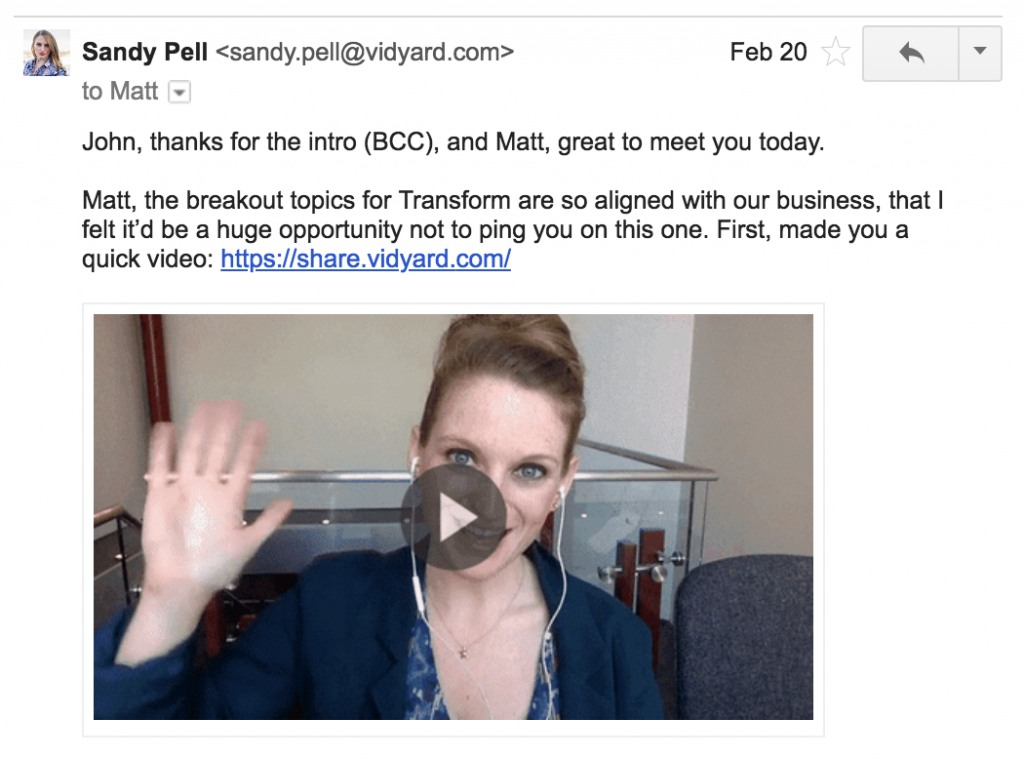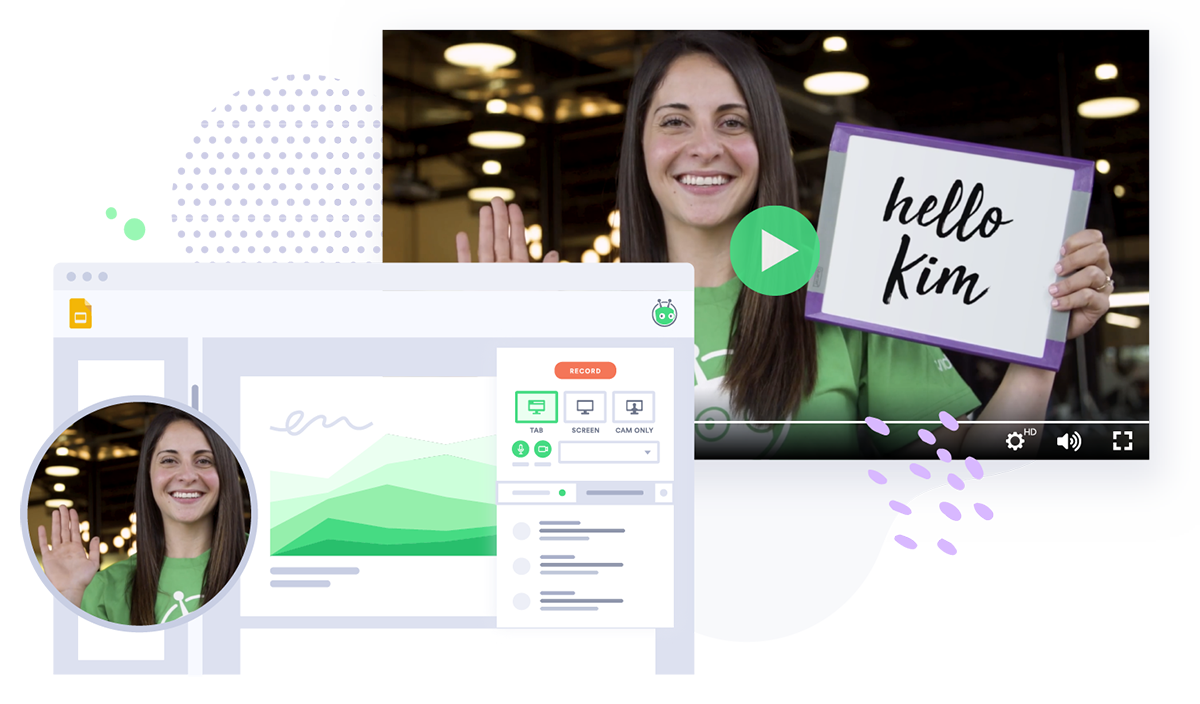How to Use Video Pitching to Make Media Relations Human Again
January 8, 2023
Journalists are inundated with a constant flood of pitches and press releases—and, as the Hustle’s Kendall Baker writes in his open letter to PR professionals, “they all suck.”
“Well, not all of them,” he concedes. “Some are fine. But the majority of the time, the pitches I get from you guys are downright awful.”
Ouch! What’s a savvy PR person to do?
The truth is, Kendall is right to give comms people a little tough love. Journalists are busy people, and they’re sick of reading through copy-and-pasted messages or emails that have been blasted to hundreds of others. They don’t have time to read through all the links you just sent them on the off chance that it might result in an interesting article or drive traffic to their website. You need to give them a compelling reason why your story would add value to their publication. Otherwise, they’re going to lose interest—fast, and you’re done
The good news is I’d like to share my secret hack with you, and I can guarantee that it will help you “unsuck” your pitches. Welcome to video pitching.
- Contents
- Take Your Pitches From Zero to Hero with Video
- How to Craft a Great Video Pitch
- 5 Video Pitch Examples
Take Your Pitches From Zero to Hero with Video
Video pitching cures what so often ails the kinds of generic and impersonal messages that journalists like Kendall are so tired of getting. By nature, video is attention-grabbing and personal. In fact, when I first gave video pitching a trial run, my pitches received nearly 50% higher engagement than my text-based attempts Not only will you leave an impression, but allowing a reporter to “meet” you over video can open up opportunities for an ongoing relationship down the line.
That’s not to say that video pitching alone is a catch-all. Just because you’re able to capture someone’s attention with video doesn’t mean you’re off the hook when it comes to adding value to their day. Your pitch should still demonstrate that you’ve done your research on the publication and show how your piece would be of interest to their audience (or open them up to new readership). Combine thoughtful outreach with the power of video and wait for the editors’ responses to come rolling in.
How to Craft a Great Video Pitch
If you’re convinced that it’s time to give video pitching a shot—great! I have some tips and best practices that I’ve learned over the past year of experimenting with video pitching that I’m happy to share with you.
(Psst, if you don’t already have a screen-recording tool, now’s the time to download one. I love Vidyard’s free Chrome extension for this!)
1. Do Your Homework
Each video pitch should be custom-tailored to its recipient, so be sure to do your due diligence. What types of articles does the publication you’re pitching to typically publish? What makes your idea a good fit? Why will their audience be interested?
2. Skip the Script
You want your pitch to engage your audience but don’t want to sound forced. I would recommend jotting down a few points ahead of time so you’re sure to hit on your key ideas, but otherwise, don’t plan what you’re going to say. Your message will seem that much more personal and genuine if it’s unrehearsed. If a fire truck drives by in the middle of your video, add a little joke in there. You’re real, and life around you is too.
3. Keep it Concise
When it comes to the right video length, shorter is typically better. I always aim for 30 seconds max, but I also always tend to go over. Thirty seconds seems like it would be short enough to hold the attention of a busy reporter but long enough to show how you would add value to their publication. If they want more, they’ll ask for it.
4. If at First, You Don’t Succeed…Try Again!
You might feel a little awkward on camera at first, and that’s perfectly normal. Give yourself a few no-pressure trial runs to experiment, and I guarantee you’ll loosen up. When I first started video pitching, I’d take 5-10 (sometimes more…) videos before I was happy with the final result. Now, I do it all in one shot.
That’s great in theory but what about in practice?
5 Video Pitch Examples
I’ve rounded up a series of examples from past pitches I’ve done that you can use as inspiration. Check them out below.
1. Video Pitching a Speaker
My first example comes from when I pitched Vidyard’s CEO for a big speaking engagement. And I didn’t hold back on this one—I went right to the CEO and co-founder of VentureBeat, Matt Marshall. For a guy who must get pitched ALL the time, he sure got back to me pretty quickly with a note that he loved my personalized video, too, followed by an intro to his speaker lead.
2. Making Introductions to Fellow Panelists
In this next instance, I was about to go speak on a panel for Young Women in Business, and I didn’t know any of my fellow panelists. I don’t know about you, but I always find it awkward walking onto a stage without having any idea who else is up there with me. I made this video to say hello to them and break the ice in advance. It was received with very warm responses.
In this subsequent example, I tried pitching the Twitter and LinkedIn universes on a recent product update just to see what would happen. What happened, you might ask? Well, 6 favs, and 1 RT, that’s what. I think video is a great way to engage on big announcement days, and I’ll definitely be using this tactic in the future.
3. Responding to a Reporter’s Request
Reporter requests have always been an area of struggle for me, but when I add video pitches to my replies, my odds go up twofold. In this example, Ashley wrote me back right away, offered me the spot, ended up publishing my opinions in a piece, and gave me a complete author profile too. I’ve used video pitching ever since.
4. Connecting with Conference Attendees
In this following instance, I wanted everyone to know that I was heading to an upcoming conference—including a number of reporters who had pinged me that they’d be on site. I made this video and pushed it all across my Twitter and LinkedIn. I had a ton of engagement. In addition, people who I had never seen or met before came up to me at the event and told me that they had watched my “video.” Woohoo!
In fact, my first video was so successful that I decided to do a few follow-up videos from the conference, too. I’ve included one below:
5. Follow-Up Messages and Building Rapport
Have you already pitched a reporter? In this next example, the reporter wrote back, requesting more information on the pitch. I decided to make them a video to let them know that I was on it while also introducing myself to them. Video is a great way to build common ground and tighten up a relationship.
Bonus: (Another) Speaking Engagement Pitch
I know I already gave an example of pitching a speaker, but this one was too good not to share. In this final example, I was pitching our CEO, Michael Litt, to speak at an upcoming high-end tech conference. Given that Adam Lashinsky probably receives hundreds of emails per day, I didn’t expect a reply. Video clearly worked, though; I was happy to see his response shortly after. He even introduced me to his colleague to pick up the conversation.
I hope this post has been helpful and that you’re excited to experiment with video pitching. Connect with me on Twitter @SandyCanvas and let me know how it goes—I would love to hear how people respond to you when they find a video pitch in their inbox!
A version of this piece originally appeared on SpinSucks.
This post was originally published on May 8, 2018. It was updated on January 8, 2023.






